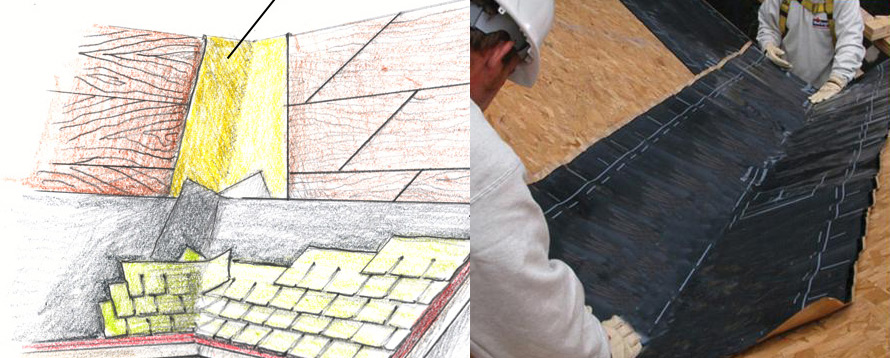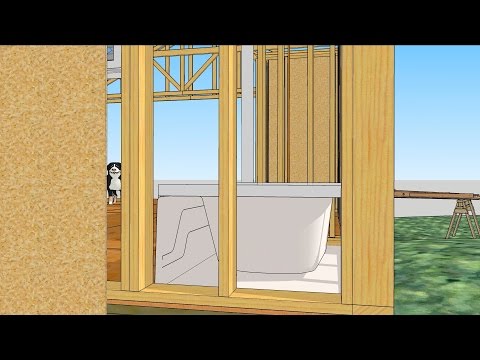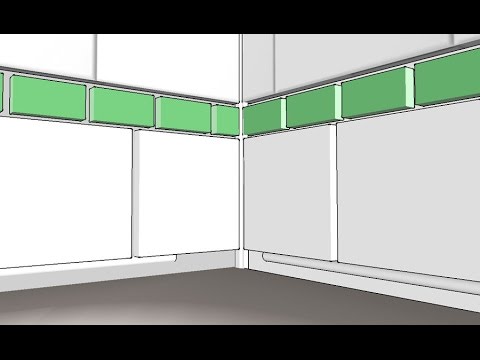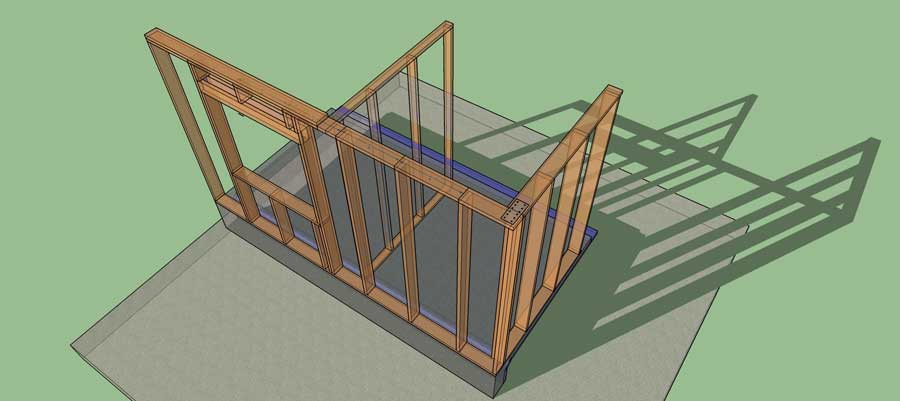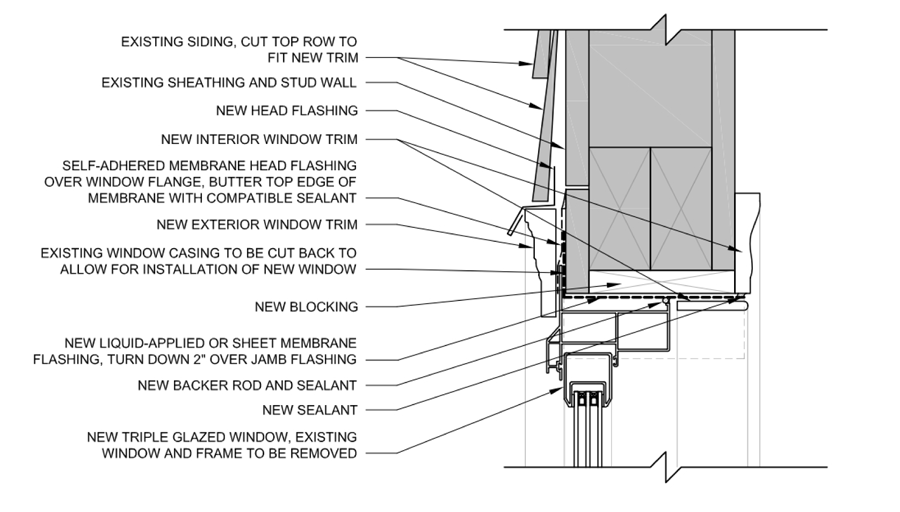Roof valleys are like gutters with a steep pitch. Just because they are steep, doesn't mean they're not gutters
Because water is intentionally directed into valleys, it is important to make sure the valleys don't leak. It is worth jumping through a couple of extra hoops. Gutters are made out of metal, and it is a good idea to make valleys out of metal—unless you live in the desert.
Before laying down the valley metal, however, lay down the roofing membrane. Peel and stick membrane is a critical layer protecting the framing and interior of a house from big water leaks.
And before you lay down the roofing membrane, make sure the wood is solid and clean.
Here's how BASC says to do it:
- Clean the valley to ensure that no nails, wires, or debris are in the area. Although the membrane is made from relatively strong material, it can be torn or punctured. Also, it is important that the area be dry and free of oil and water, and that dust be swept away to give the membrane a chance to stick.
- Measure the length of the valley to be covered.
- Cut the self-sealing bituminous membrane to length. For extremely long valleys, cut the material in shorter, more manageable lengths, and apply from the lowest point to the highest, overlapping the membrane section by 6 inches in terraced shingle like fashion to allow water to flow unobstructed down the length of the valley. The membrane must be straight and centered with the valley line.
- Secure the material in place with a heavy roller making sure no gaps, creases, or folds are present. The material must lay flat and be applied to the manufacturer’s specifications.
- Install the underlayment directly over the membrane and continue with the construction of the roof.
<code>
- Energy Star v3: Water Management Checklist, Water-Managed Roof Assembly. Self-sealing bituminous membrane or equivalent at all valleys & roof deck penetrations. Not required in dry climates as shown in 2009 IECC Figure 301.1 and Table 301.1.
- 2012 IRC: Section R905.3.8 Flashing
</code>
Sources:

